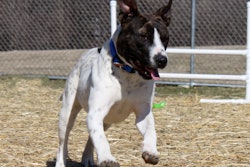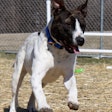
Certain demographic groups spend more on their pets per month than others. Identifying those groups may allow targeted marketing that reaches pet owners who are most likely to spend more on their companion animals’ food. For example, pet owners with high education levels tend to spend more on dog, cat and other pet food.
A group of researchers analyzed the relative importance of price, ingredients and attribute claims on pet food buying decisions among dog owners in the United States. They identified one location as a potential hotspot for pet spending, considering the importance of education level on monthly pet food expenses.
“Targeting advertising efforts at schools and colleges is advised based on our analysis,” the Kansas State University researchers wrote on a poster presented at the 2024 Agricultural and Applied Economics Association annual meeting held in New Orleans, Louisiana, USA, on July 28-30. The researchers based their analysis on a survey of 5,000 dog owners in the U.S.
Survey respondents selected the most important attributes in three categories: health, ingredient, processing, and supply-chain attributes. Among these, “Digestive tract health” and “Joint health” were the most important health claims. “Natural” and “Grain-free” were the highest-ranked ingredient attributes. “Fresh” and “Minimally processed” were the most important processing-related claims.
Education level correlated to pet owner spending
Several interconnected factors may influence why pet owners’ education levels correlate to their willingness to spend on pet food each month. In general, consumers with higher education levels may have increased awareness of health and nutrition, higher disposable income and access to a range of information sources. The humanization of pets has led to these same trends applying to dogs, cats and other companion animals.
Pet owners with higher education levels may be more aware of their pets’ nutritional needs. This awareness leads to an informed choice, prioritizing their pets’ long-term health and well-being over short-term cost savings. Education often offers access to gainful employment, so college-educated pet owners are more likely to have higher disposable incomes that can go towards premium pet foods. Experience gained with formal education may make these pet owners adept at researching and discerning credible information about pet nutrition.
Education also influences where people live. Pet owners with higher education levels are more likely to live in urban or suburban areas where premium and superpremium pet food options are more accessible. These pet owners may be part of social networks where premium pet food is the norm, reinforcing their purchasing decisions.
For pet food manufacturers, recognizing these interrelated factors can guide targeted marketing strategies and product development to cater to the high-spending, higher-education customer segment. Created by Tim Wall using DALL-E 3
Created by Tim Wall using DALL-E 3



















